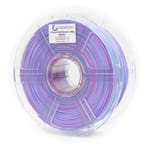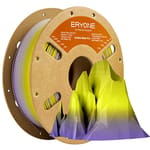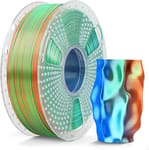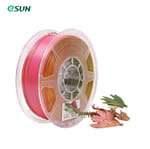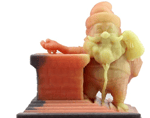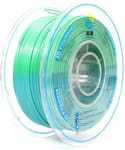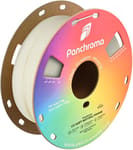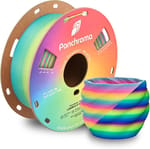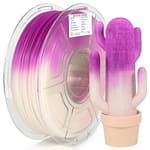When 3D printers were just hitting the consumer market, there weren’t many filament options available. The material choice was poor, and the available colors could be counted on your fingers. In recent years, 3D printers have entered many homes, and the demand for new and interesting filament has grown.
Multicolor filaments are particularly popular. They can be printed on just about every 3D printer without the need a multi-material unit or multiple extruders. Since most machines aren’t multicolor-capable yet, multicolor filaments are the cheapest way to print with a variety of hues – and without the waste introduced by a multicolor system!
There are many types of multicolor filaments, with the most famous one being rainbow filaments. In fact, some manufacturers simply refer to any multicolor filament as “rainbow” filament even though a more strict use of the term would limit rainbow filaments to those that feature all seven rainbow colors.
Since we have another article on rainbow filament, we’ll focus this guide on the other kinds of multicolor filaments out there. So if you want to achieve colorful 3D prints with a single spool, read on for brands we’d recommend!
Considerations
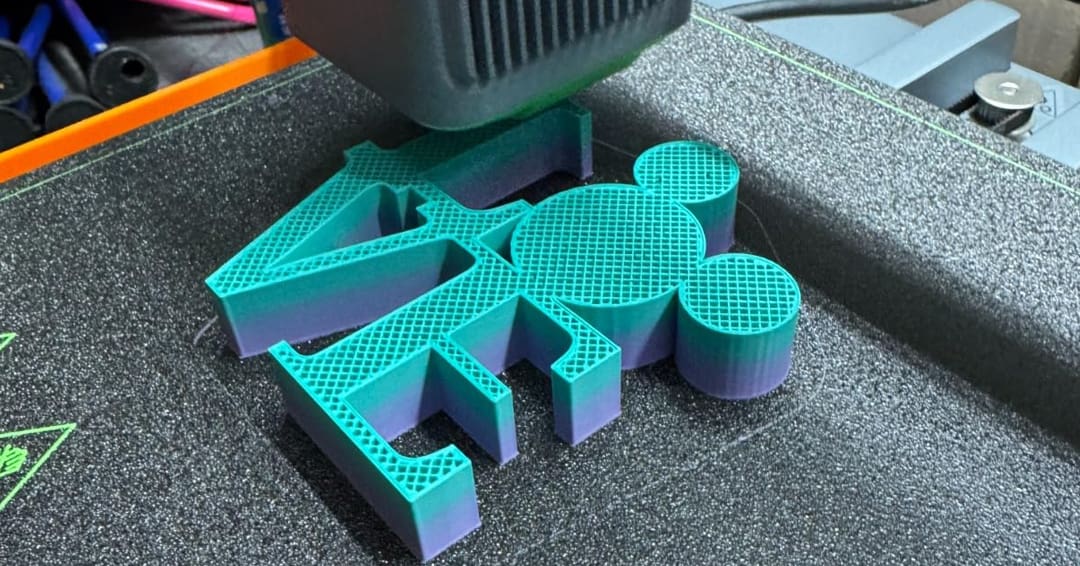
Although rainbow filament is one of most famous multicolor filaments, there are many new and interesting variations that you should definitely check out! Our picks are based on a few key considerations:
- Brand reputation: There are thousands of companies out there that produce filament, but we selected reputable brands that are known for the quality of their products. This ensures that the filaments are reliable and produce great parts with a beautiful finish.
- Rating: To ensure that a filament is actually great, what better source than other makers’ feedback? We took reviews from customers into considerations to make sure the picks deliver the quality and appearance expected.
- Uniqueness: Since we’re talking about filaments for mostly aesthetic use cases, we considered options that stand out from other manufacturers’ offerings. We’ve chosen brands that offer interesting color options that will make your prints stand out.
Without further ado, let’s dive in!
Gradient
Although frequently referred to as “rainbow”, gradient filaments are slightly different from rainbow filaments because they don’t feature all the colors of the rainbow. Instead, they typically feature fewer color changes and custom palettes, so they’re perfect if you’re looking for a gradient of a specific set of colors. The number of colors varies between the different brands; usually between two to five colors.
In terms of use cases, the gradient effect makes these filaments especially great for time-lapses, as a Reddit user noted.
Cookiecad
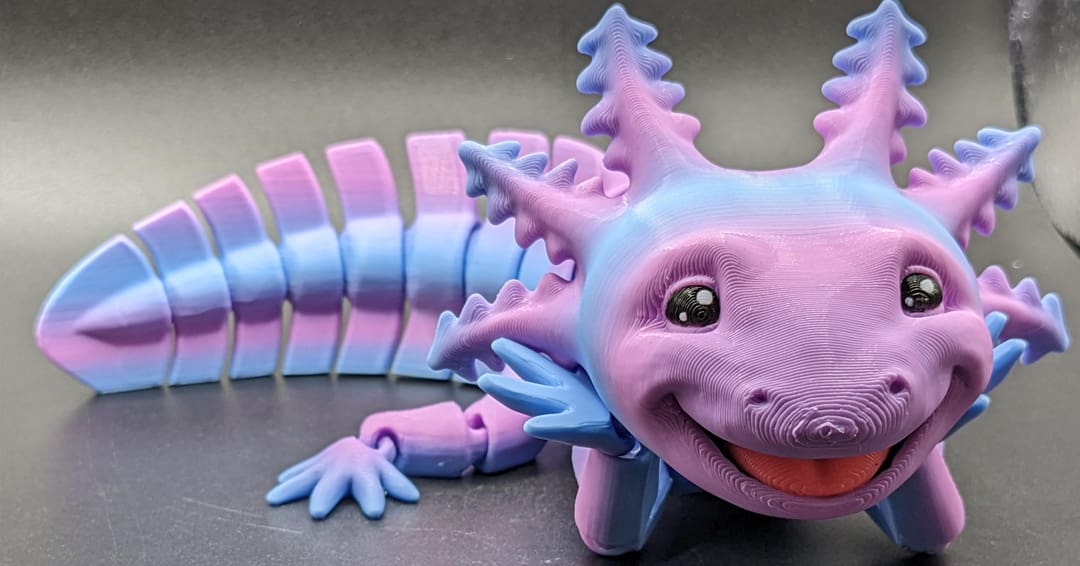
Cookiecad is a company that produces both design software and 3D printing filament. This brand really stands out because of their colors! Treat yourself to Fairy Floss, a glitter-infused gradient going from pink, to purple, then blue. If fairies aren’t your thing, how about Mermaid – a matte-finished gradient transitioning from purple, to blue, then green?
The company offers two lines of gradient filaments: Gradient and Ombré. Some colors in both are available in Cookiecad’s Elixir finish, which adds a glossy, shimmering, and iridescent effect to the filament. While gradient options are available in PETG, TPU, and ABS, the material with the widest offering of colors is, of course, PLA.
The color change distance isn’t specified, but Cookiecad states that the color change is slow. Smaller models are likely to present only one color, unless you’re printing multiple small models at the same time. That being said, the company also sells a couple of 0.5-kg spools with faster color shifts. These are available in their Unicorn and Mermaid colorways.
With a 4.7-star rating at Amazon, customers are happy with these filaments. For example, kim shared that the quality is excellent and the subtle color change of the ombré filament creates great prints. Another customer confirms that this filament prints without problems, but for the best results, they suggest printing with a higher temperature than you would with regular PLA.
- Colors: 19, including unicorn (pink-purple-blue), sunrise (pink-orange-yellow), as well as several ombré options
- Sizes: 1.75 mm (0.5 kg, 1 kg)
- Recommended Settings: Hot end 205-235 °C; heated bed not specified
- Price per kg: ~$35
Eryone
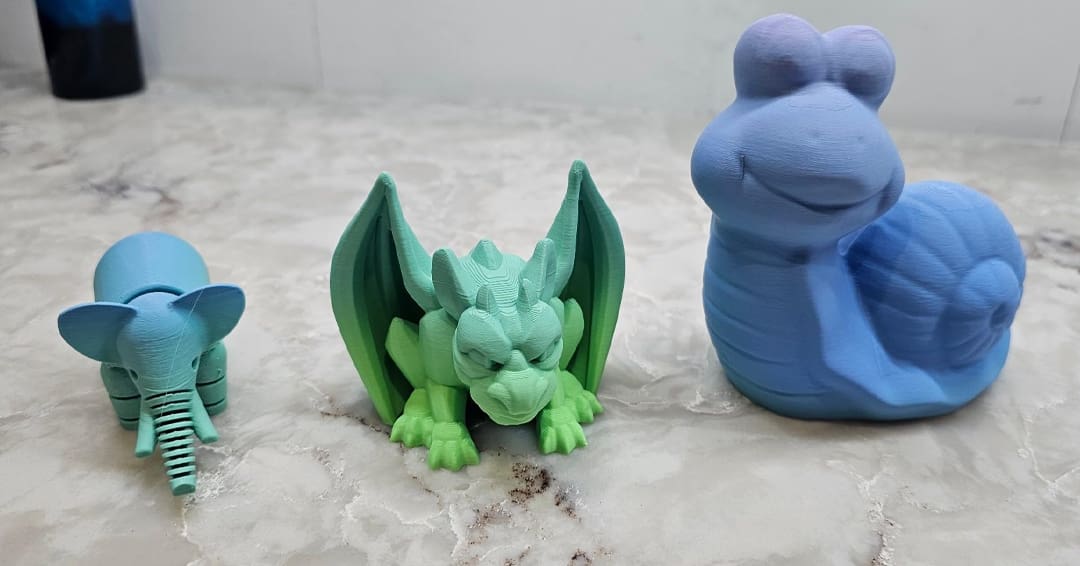
Eryone offers no less than six gradient variations that you can choose from. There are different color palettes: for instance, a forest-themed one (from yellow to green) and a fire-themed spool (from red to yellow). The color change distance is relatively fast: between 5 and 8 meters, so these filaments would be great for printing smaller models.
Quite a few customers are satisfied by this filament’s gradient effect, and some have noted that it print great even with the standard PLA profile. Given the expense of novelty filaments, Eryone’s affordability has been a big hit.
- Colors: Six, including dreamland (blue-purple), fairy (pink-green-blue), and financier (pink-yellow)
- Sizes: 1.75 mm (1 kg)
- Recommended Settings: Hot end 190-220 °C; heated bed 55-70 °C
- Price per kg: ~$35
Protopasta
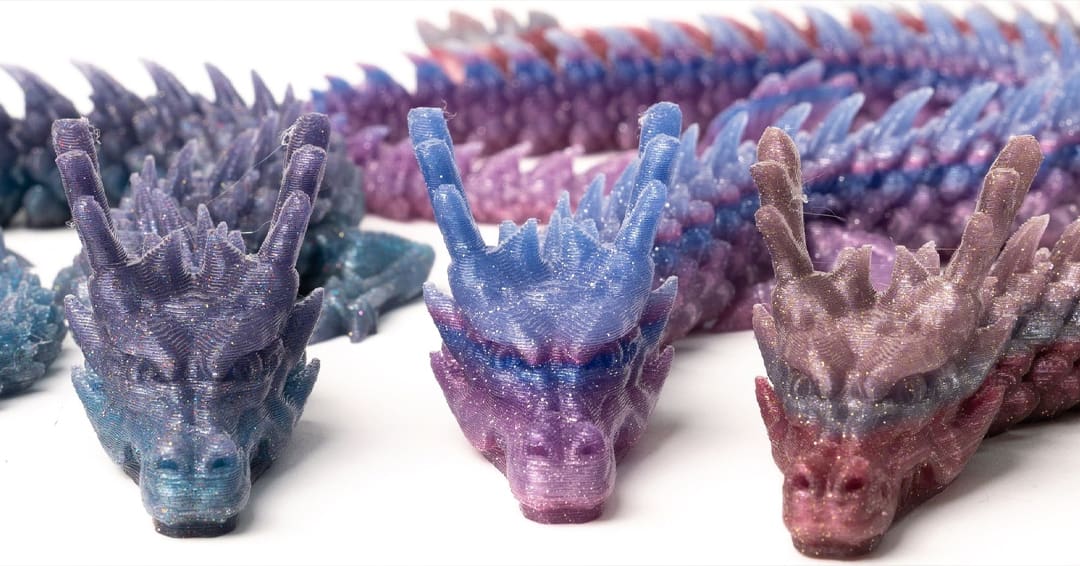
Protopasta is another famous brand that provides high-quality filaments. The company behind the brand, Protoplant, manufactures variations of PLA and PETG, including composites such as carbon fiber- and metal-filled filaments. Their gradient collection, called “Nebula“, is available in heat treatable PLA (HTPLA) and comes in seven really cool colorways.
As you might have guessed from the name, the colors chosen for these spools are inspired by nebulas and include glitter to evoke the shimmer of distant stars. Even though Protopasta hasn’t specified the color change distance, the company states that the sample models of the website images are small. So, these spools should be great for smaller models as well as big ones.
Makers really enjoy the final finish this filament leaves on parts. For instance, TheeWizard shared that the color came out “divine” and that the quality is great. Although the filament is on the pricier side, customers noted that it’s worth it.
- Colors: Seven, including night glow, stardust, and gold dust
- Sizes: 1.75 mm (0.05 kg, 0.5 kg, 1 kg)
- Recommended Settings: Hot end 195-225 °C; heated bed 50-60 °C
- Price per kg: ~$50
Dual & Tricolor
As you might have guessed from the name, these filaments feature two colors in the dual version and three colors in the tricolor spools. The difference between these filaments and gradient ones lies in how the filaments are produced. The colors used in gradient filament are extruded in a specific sequence to achieve the gradient effect.
The filament strand for dual and tricolor filaments is itself is divided into each color for the entire length of the filament, so each color is printed at the same time. The final effect is one of a kind because the printed model will feature different colors depending on the angle at which you look at the model. By rotating the piece, you’ll be able to appreciate all of the colors used in the specific colorway.
MatterHackers
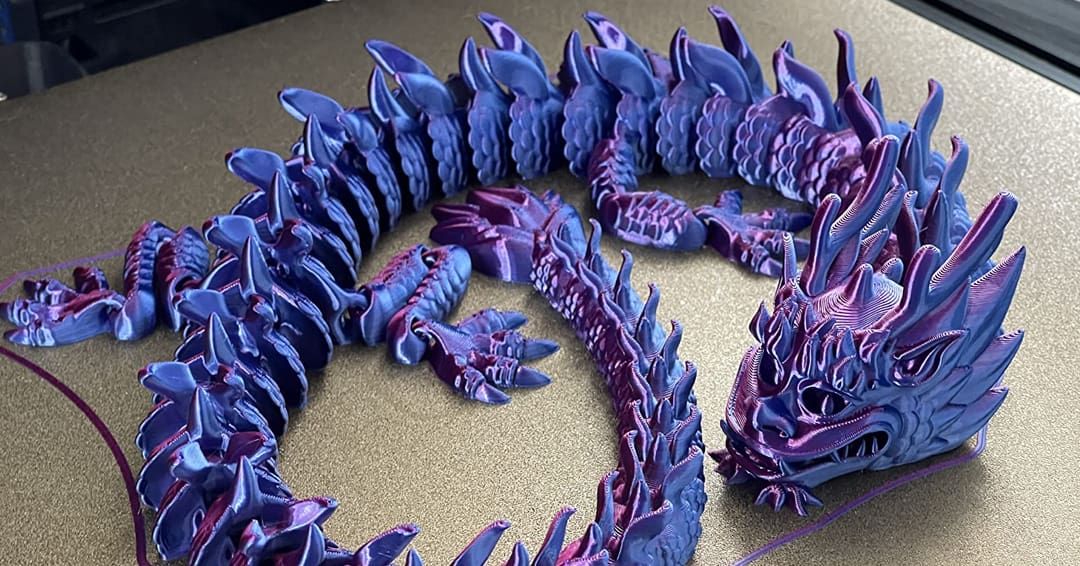
The popular online store MatterHackers sells not only 3D printers, CNCs, laser engravers, and accessories; they also sell their own brand of 3D printing filaments alongside other well-known filament manufacturers such as Protopasta and Polymaker, among others.
The dual-color series produced by this brand is called “Quantum”, and it features no less than 13 color options that you can choose from. The filament has a silk finish, so the final part is stunning.
It shouldn’t be difficult to print with these filaments if you follow the guide they’ve published. They’ve also created a calibration coin that’s extremely helpful in obtaining the exact effect you desire. With this fast-printing model, you can determine the location of the color change based on your printer and profile settings. With this test, you can establish how many degrees you need to turn the model by counting the grooves of the coin and multiplying that amount by 10°.
Customers are happy with this filament. Devin T. reports that this filament prints great and the final effect is beautiful. Another maker agrees and shared that they usually set the nozzle temperature to 210 °C to print with this material.
- Colors: 13, including blue raspberry, blue Green, and purple gold
- Sizes: 1.75 mm, 2.85 mm (0.75 kg)
- Recommended Settings: Hot end 215-235 °C; heated bed 50 °C
- Price per kg: ~$56 ($42 for 0.75 kg)
Sunlu
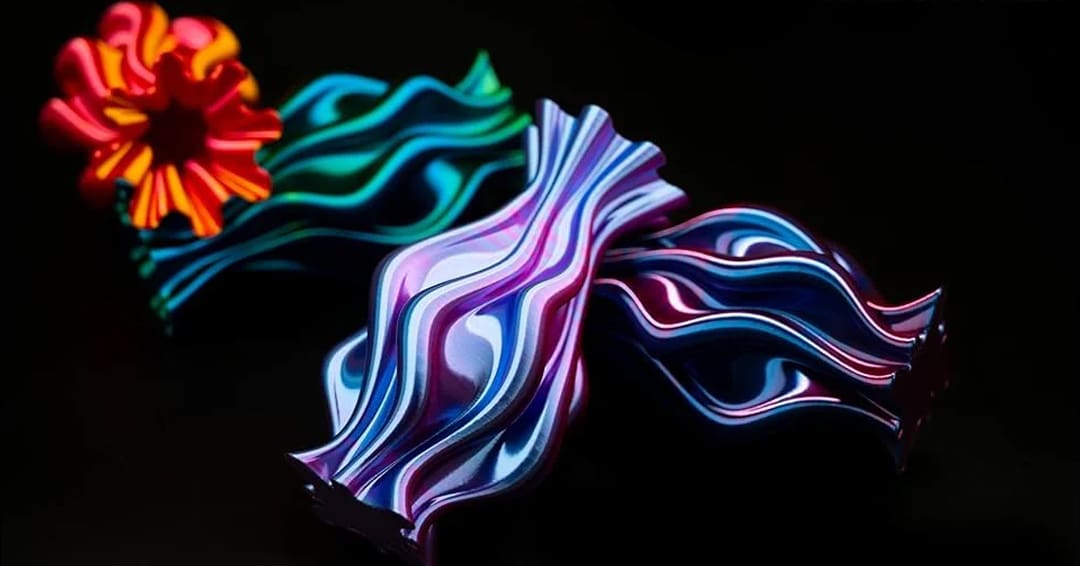
Sunlu is a well-known filament manufacturer that offers a multitude of filaments with different characteristics. Of course, they produce dual- and tricolor silk PLA+ filaments. A wide variety of color combinations are available for both.
Makers loved the colors of these spools. They have also noted that it prints great without much tweaking using the silk profile.
- Colors: Seven dual-color options, including black+gold, red+blue, and black+purple; two tri-color options, including blue+green+purple and red+yellow+green
- Sizes: 1.75 mm (1 kg)
- Recommended Settings: Hot end 205-215 °C; heated bed 50-65 °C
- Price per kg: ~$30
eSun
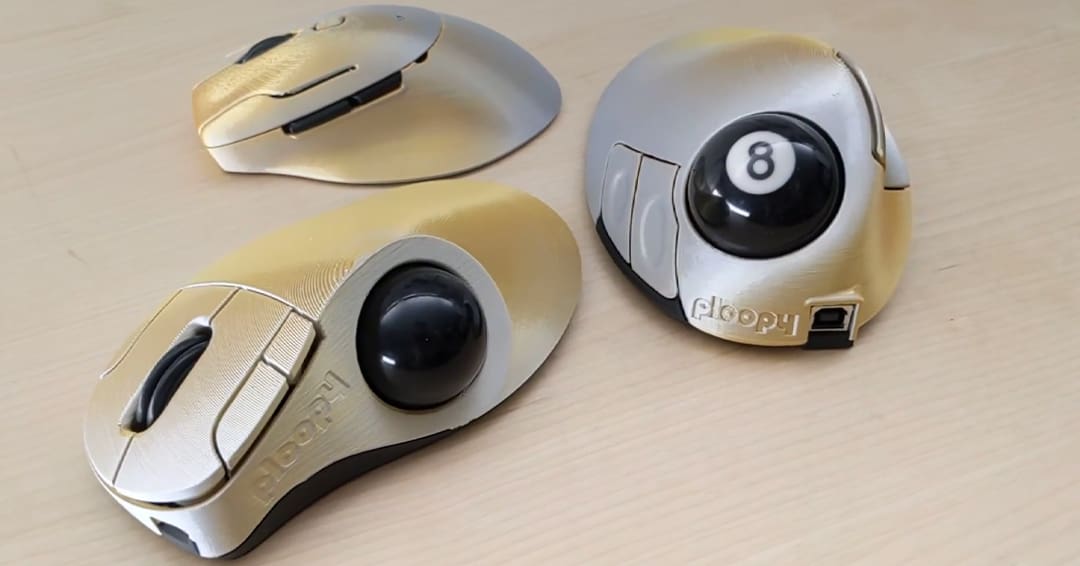
Another filament manufacturer with an extensive catalog is eSun. Like Sunlu, the dual and tricolor spools offered are primarily in silk PLA to add a shiny touch to the material. You can choose from 21 color combinations. If that’s not enough, there’s also a starlight-inspired dual-color option, ePLA Magic – which has a glossy twinkling finish.
Customers are happy with eSun products. In particular, they have noted that these filaments print great without hotend or bed adhesion issues, but you might need to try different temperatures to obtain the best result. However, a maker struggled with stringing even after drying.
- Colors: 11 dual-color options, including gold+silver, red+green, and blue+silver; 10 tri-color, including gold+red+green, blue+red+purple, as well as red+black+gold
- Sizes: 1.75 mm (1 kg)
- Recommended Settings: Hot end 190-230 °C; heated bed 45-60 °C
- Price per kg: ~$25
Temperature Color-Changing
It’s pretty easy to guess what a temperature color-changing filament does. This kind of material usually features two or more colors that appear based on the object’s temperature. This is a really cool filament that isn’t very famous or common but can be used for interesting projects. If you want to dive deeper into it, you can read our article dedicated to the topic.
Amolen
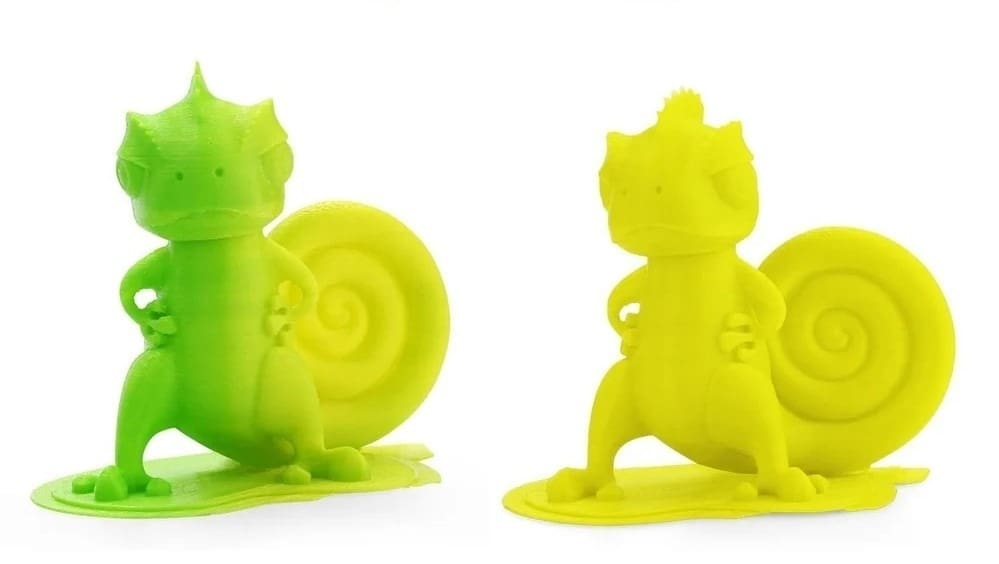
Not many companies produce this kind of filament, but some reputable brands can be found. For example, Amolen is a filament manufacturer based in Los Angeles, CA, that offers a four-pack of temperature color-changing filaments.
The pack includes four colors: orange, red, green, and blue. The base color is white for all of them except for green, which changes to yellow. The colors starts to transition above 30 °C with the full transformation occuring above 45 °C.
Customers confirm that the temperature color-changing claims are true. They’ve also shared that you should be able to print these spools with the same profile you usually utilize for silk filaments.
- Colors: White-blue, white-red, white-orange, and yellow-green
- Sizes: 1.75 mm (4 x 0.2 kg)
- Recommended Settings: Hot end 210-230 °C; heated bed 30-65 °C
- Price per kg: ~$54 ($36 for 0.8 kg)
Yousu

Yousu is a 3D printing materials manufacturer whose extensive catalog includes a temperature color-changing filament. There’s only one colorway: blue-green. Below 31 °C, the print appears blue, and above, the print changes to green.
You can put the print in ice water or in the refrigerator to make it turn blue, and if you want it to turn green, you can use some warm water or simply hold the print in your hand.
Customers appreciate the printability of the material: One maker reports that the filament prints without issues and sticks well to the build plate. Another stated that the colors look just like the company images.
- Color: Blue-green
- Sizes: 1.75 mm, 2.85 mm (1.0 kg)
- Recommended Settings: Hot end 180-205 °C; heated bed 40 °C
- Price per kg: ~$27
UV Color-Changing & Glow-in-the-Dark
Similar to the temperature color-changing materials, these materials change color based on a stimulus. Instead of temperature, they rely on UV light to change their appearance.
UV color-changing filament change colors when directly exposed to UV light, whereas glow-in-the-dark filaments absorb the UV light and change color when it’s dark.
Polymaker
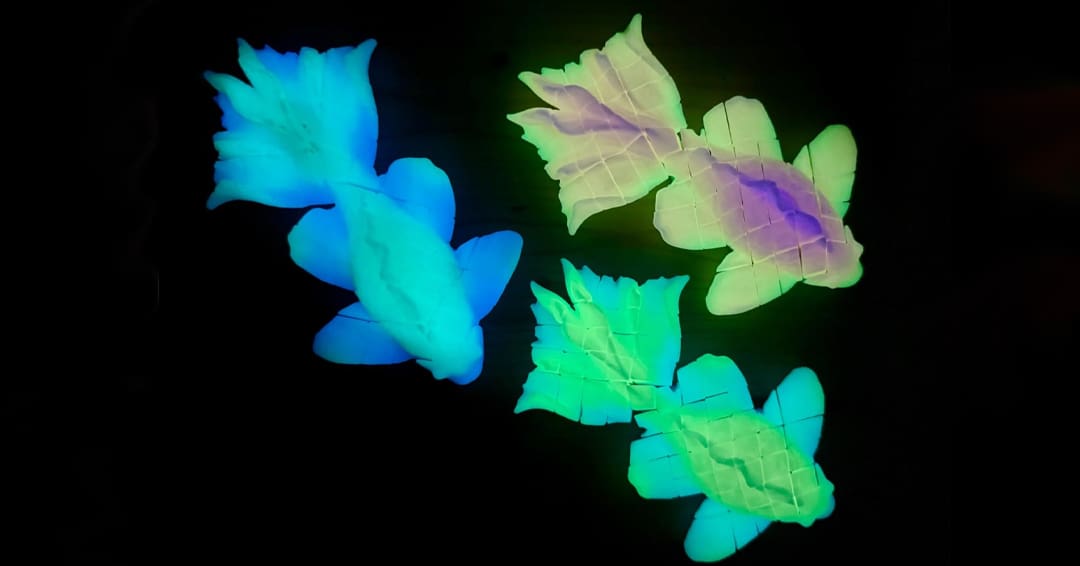
Polymaker offers both UV color changing and glow-in-the dark filaments. In fact, their catalog includes a few options in their Panchroma line of filament: Luminous, Glow, Neon, and UV Shift – all in PLA.
Luminous and Neon have the most colors: six each, with a legit rainbow option in the Luminous series. At the time of writing, there’s only one colorway available in for the UV Shift PLA: the material changes from natural to orange when exposed to UV light.
Customers report that the glow is intense and lasts a long time. Based on other makers’ experiences, the filament should print without any issues.
- Colors: Natural-orange for UV color-changing; 15 between three different glow-in-the-dark filaments
- Sizes: 1.75 mm (1 kg)
- Recommended Settings: Hot end 190-230 °C; heated bed 25-60 °C
- Price per kg: ~$30
iSanmate

iSanmate is another brand with an impressive catalog that features a wide variety of different materials. They produce both UV color-changing PLA and glow-in-the-dark PLA in different hues. You can choose between five different colors for the glow-in-the-dark filament, including a multicolor option.
For UV color-changing filament, you can select between blue and rose red. Check out this video to see the filament in action.
Makers have shared that the glow-in-the-dark PLA shines bright after charging, but you may need to pay attention to the brittleness of the filament. Another maker, however, reported that they didn’t have any issues with the quality of the filament and stressed tuning your printing and experimenting with the temperature settings before printing your final part.
- Colors: Blue and rose red for UV color-changing; red, green, blue, blue-green, and multicolor for glow-in-the-dark
- Sizes: 1.75 mm (0.25 kg, 1 kg)
- Recommended Settings: Hot end 190-220 °C; heated bed 25-60 °C
- Price per kg: $29-$33
License: The text of "Multicolor Filament: Print Colorfully Without an AMS" by All3DP is licensed under a Creative Commons Attribution 4.0 International License.
CERTAIN CONTENT THAT APPEARS ON THIS SITE COMES FROM AMAZON. THIS CONTENT IS PROVIDED ‘AS IS’ AND IS SUBJECT TO CHANGE OR REMOVAL AT ANY TIME.

